French designer Coperni uses NASA’s silica airgel to create a bag that’s 99% air
If paying for something that’s 99 percent air doesn’t sound like a good deal, then this bag might not be for you.
French designer Coperni has created a bag from NASA’s silica airgel nanomaterial.
This space-age material was used to capture stardust and insulate the Mars rover, but now it’s being used for high fashion.
The entire bag is made from one of the lightest materials known to science, weighing just 33 grams, just over six sheets of A4 paper.
But even though it seems a bit delicate, Coperni insists it can still support the weight of your iPhone.
This incredible bag may look like it’s made of clouds, but it’s actually made of airgel by French designer Coperni
In a post on Instagram, Coperni showed off the incredible bag, which was dubbed the Air Swipe Bag.
From the post you can see that the bag is translucent and cloudy, with white streaks running through the material like trapped smoke.
However, many fashion fans on social media are skeptical about the practicality of the bag.
One commenter wrote: ‘What can you put in it and will it break if you drop it?’
Another skeptical commenter asked, “Does it function as a bag?”
As much as the material resembles a cloud, the designers promise it can hold at least some of your stuff.
In response to a commenter, Coperni wrote: “It can fit an iPhone.”
Because the iPhone 15 Max weighs 221 grams, this would mean that the bag can carry more than six times its own weight.

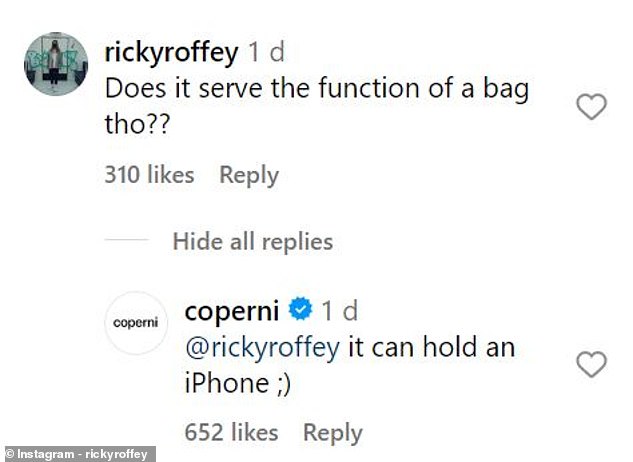
On social media, some wondered if this lightweight material could be practical, but Coperni insists the bag can at least carry a phone
The bag was developed by Professor Ioannis Michaloudis of the American University of Cyprus and uses the nanomaterial silica airgel.
In the post, Coperni writes: ‘The Air Swipe bag is made of 99% pure nothing and 1% glass, the glass of the future.’
Aerogels are full of nano-level pores, like a sponge filled with incredibly small holes.
These pores trap air, creating a delicate but non-fragile material that is both sturdy and extremely light.
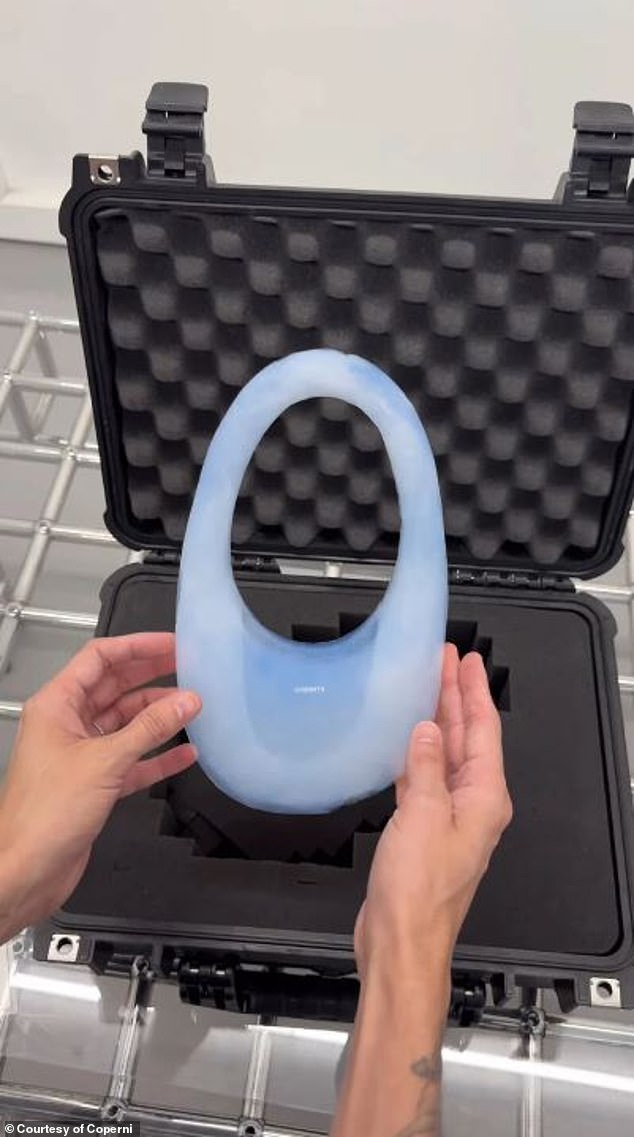
The bag is made from the same material NASA used to collect dust from a comet during the Stardust mission
Aerogels were initially developed by NASA in the 1930s as a new form of insulation to help craft withstand the intense conditions of space.
To understand how this material is made, imagine making a jelly from gelatin powder and water.
When you combine this polymer and solvent and let the mixture harden, you get a jelly.
Normally, if you were to heat the jelly until all the water had evaporated, all that would be left would be gelatin powder.
But aerogels manage to retain their gel-like structure even after all the solvent has been removed; creating materials that are stronger and lighter than anything else.
Coperni calls this the ‘lightest solid on planet Earth.
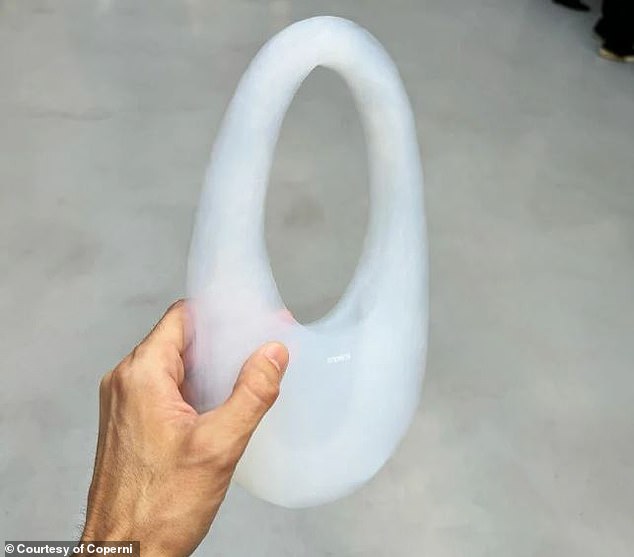
The space-age bag weighs just 33 grams in total thanks to being 99 percent air and just 1 percent silica-based glass
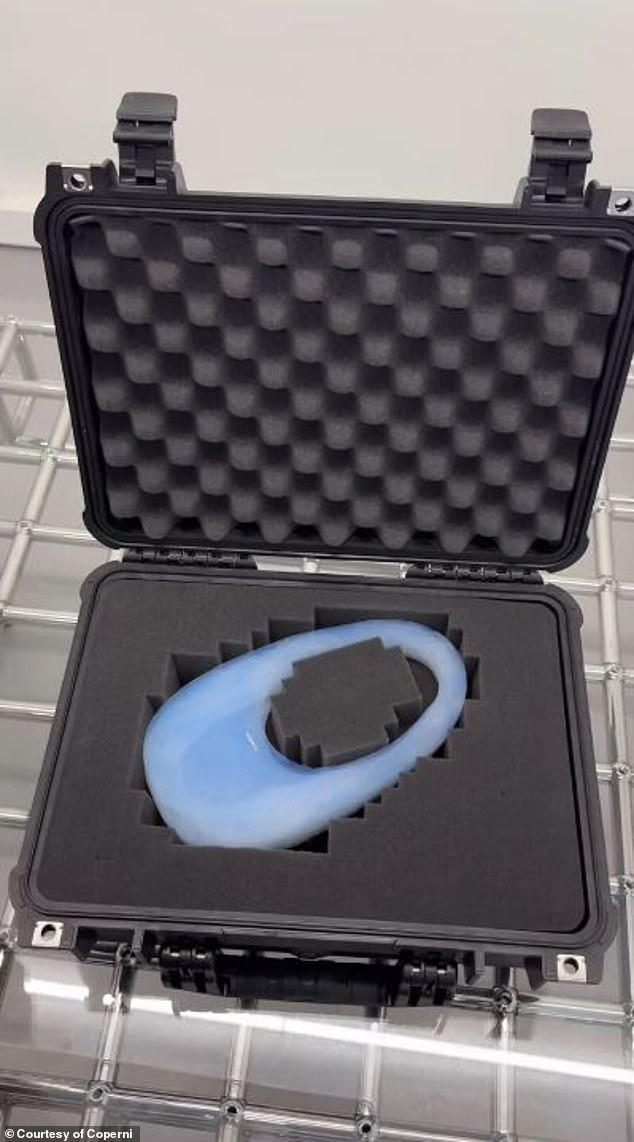
According to the designer, the bag is the largest piece made from airgel
However, the material’s incredible capabilities don’t stop there.
As Coperni notes in their article, this NASA-developed material can withstand temperatures of up to 12,000°C and pressures of 4,000 times its weight.
While this may not be very useful in a bag, it is very useful for missions in space.
NASA has used more advanced versions of this material to insulate spacecraft and landers, including the Mars rover.
But its most notable use is capturing particles from a comet during the 1999 Stardust mission.
Coperni says: ‘This Air Swipe bag is the largest object ever made from this space technology nanomaterial.’
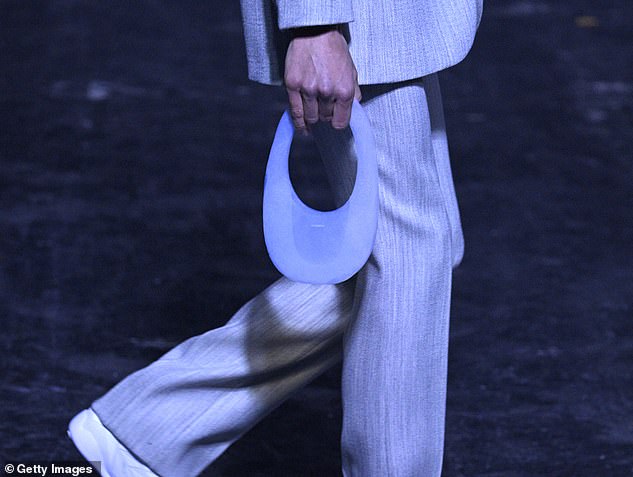
The bag was launched during the Fall/Winter 2024 collection, but Coperni hasn’t said if it will be available commercially
The Air Swipe Bag was created as part of the designer’s Fall/Winter 2024 collection.
Although the bag did appear at the ‘ready to wear’ collection show in Paris, Coperni has not yet announced whether the bag will be available to the public or how much it will cost.
MailOnline has contacted Coperni for additional information.
However, this isn’t Coperni’s first use of space-age materials in their fashion offering.
Last year, the designer unveiled a limited-edition bag made from resin and moonstone found in France in 1968.
Coperni said the Mini Meteorite Swipe Bag “combines archaeology, design and classical and primitive art.”
But at an eye-watering price of 40,000 euros, this price could be too high even for a piece of a 55,000-year-old meteorite.
